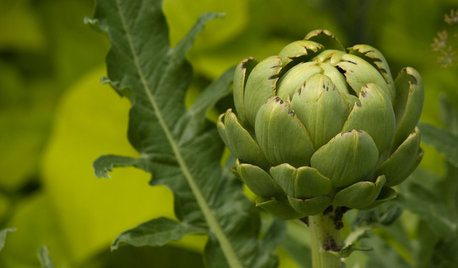Has anyone used figs leaves to make Rennet on here?
bricore_2007
16 years ago
Related Stories

KITCHEN DESIGN6 Clever Kitchen Storage Ideas Anyone Can Use
No pantry, small kitchen, cabinet shortage ... whatever your storage or organizing dilemma, one of these ideas can help
Full Story
LIFERelocating? Here’s How to Make Moving In a Breeze
Moving guide, Part 2: Helpful tips for unpacking, organizing and setting up your new home
Full Story
LIFEHouzz Call: What Has Mom Taught You About Making a Home?
Whether your mother taught you to cook and clean or how to order takeout and let messes be, we'd like to hear about it
Full Story
DECORATING GUIDESSpare Room? Lucky You. Here are 12 Fresh Ways to Use It
Imagine all the things you could do in your extra space: painting, planting, playing or nothing at all
Full Story
GARDENING GUIDESYour Garden Is Stirring — Here’s What to Do in February
February is a good time to start seeds, shape up shrubs and watch for the earliest blooms. Here’s what to do in your part of the U.S. now
Full Story
MUDROOMSThe Cure for Houzz Envy: Mudroom Touches Anyone Can Do
Make a utilitarian mudroom snazzier and better organized with these cheap and easy ideas
Full Story
BUDGET DECORATINGThe Cure for Houzz Envy: Entryway Touches Anyone Can Do
Make a smashing first impression with just one or two affordable design moves
Full Story
HOUSEPLANTSPlay Up Some Fiddleleaf Figs for a Lively Indoor Tune
Strike a dramatic chord in a minimalist scene or a country note in a rustic setting — fiddleleaf fig plants harmonize with any style
Full Story
HOME OFFICESThe Cure for Houzz Envy: Home Office Touches Anyone Can Do
Borrow these modest design moves to make your workspace more inviting, organized and personal
Full Story
LAUNDRY ROOMSThe Cure for Houzz Envy: Laundry Room Touches Anyone Can Do
Make fluffing and folding more enjoyable by borrowing these ideas from beautifully designed laundry rooms
Full StoryMore Discussions






italiangirl74
pezzuti9
Related Professionals
Fitchburg Landscape Architects & Landscape Designers · Medford Landscape Contractors · Woburn Landscape Contractors · Boca Raton Landscape Contractors · Clark Landscape Contractors · Glendale Heights Landscape Contractors · Gurnee Landscape Contractors · Holland Landscape Contractors · Lakewood Landscape Contractors · Vallejo Landscape Contractors · Vashon Landscape Contractors · Blue Springs Decks, Patios & Outdoor Enclosures · Overland Park Decks, Patios & Outdoor Enclosures · Spanaway Decks, Patios & Outdoor Enclosures · Tacoma Fence Contractorsbricore_2007Original Author
billythekidd
svanessa
bricore_2007Original Author
svanessa
bricore_2007Original Author
ingevald
steve_nj8
scott_ga
ingevald
ingevald
ingevald
ingevald
erleichda2_hotmail_com
crez
Suzi AKA DesertDance So CA Zone 9b
Suzi AKA DesertDance So CA Zone 9b
cranehillfarm_gmail_com
scott_ga